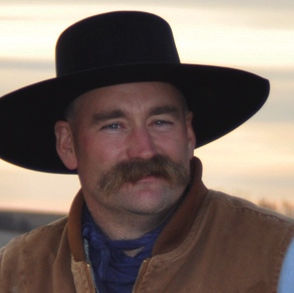Farming yesterday, today and tomorrow
It would be easy to whine and complain about how long it took these “intellectuals” to come to the basic knowledge my grandfather knew in 1952 but the truth of the matter is that all that matters is that they have finally arrived.
A recent report released from the University of Cambridge has determined that organic farming may require more land and thus be not as friendly as modern farming for the environment.
A few highlights from their report:
Agriculture that appears to be more eco-friendly but uses more land may actually have greater environmental costs per unit of food than “high-yield” farming that uses less land, a new study has found.
There is mounting evidence that the best way to meet rising food demand while conserving biodiversity is to wring as much food as sustainably possible from the land we do farm, so that more natural habitats can be “spared the plough.”
The study only looked at organic farming in the European dairy sector, but found that—for the same amount of milk—organic systems caused at least one third more soil loss, and take up twice as much land, as conventional dairy farming.
My most sincere desire regarding this report is that we ramp up the real conversation that needs to happen globally about agriculture. First of all, farming the land is not adverse to planet health. The crop plants all contribute to the cycle of life. For example, corn per acre removes 8 tons of carbon dioxide from the atmosphere each year. As this plant consumes CO2, it is generating oxygen and one corn acre produces enough oxygen to supply 80 people annually. This year American farmers planted 88 million acres of corn so my cowboy arithmetic tells me that the corn crop alone benefits over 8 billion people who get oxygen from it. And this is just one of the hundreds of crops we produce.
Of course if you really dive into the numbers that frequently come from agencies like the UN Food and Ag Organization, they attribute the clearing of the Amazon rain forest as an environmental hazard and completely leave out the intensity of American agriculture as the solution.
I will challenge anybody who wants to go on a road trip to visit farms/ranches and personally investigate the increased diversity of the ecosystem on these American operations. I will be the first to tell you that we are getting started and I think that we could and will do a million miles more but we are headed in the right direction.
So while we are here now and for those of you capitalizing on the organic demand, I think we should explore that for a minute as well. Last week I had a tremendous discussion with Gabe Brown from the Brown Ranch of Bismarck, North Dakota. The Browns have built a ranching system with 34 different enterprises from laying hens to chick peas and market all their products directly to the consumer.
In my mind the Browns have taken the correct approach and not used the “organic” marketing buzzword. You see the accelerated demand for “organic” had nothing to do with production style but rather everything with buying from someone they know.
It is worth noting here that Brown joined me on the radio because one day he heard me say, “no one in agriculture in 2018 is making a profit.” He challenged me with that and said that is not true. The Brown Ranch is doing very well. No business can rely on the way things used to be. Quite simply if you are not getting enough revenue to match your expenses what are you doing to change your marketing or production plans?
On a final note, the one thing that I become more and more opposed to daily is government intervention. We cannot continue to pave the way as the global leader in food production if we get even $1 in government assistance. I see the first round of $12 billion trade bailout qualifications are out and I wish everyone would follow the same plan we have in this house; tell them to take their money elsewhere because we don’t want it.
I am the biggest cheerleader for American agriculture and spend every day trying to educate individuals around the world as to how well we do. With that said I see clearly how much better yet we can get. Let’s saddle up and get the real work done. We’re not farming in my grandfather’s day and age anymore, but we can still learn a lot about what worked and what didn’t, especially as it has to do with diversification, by learning from that era and applying it to our modern technology.
Editor’s note: Trent Loos is a sixth generation United States farmer, host of the daily radio show, Loos Tales, and founder of Faces of Agriculture, a non-profit organization putting the human element back into the production of food. Get more information at www.LoosTales.com, or email Trent at [email protected].
